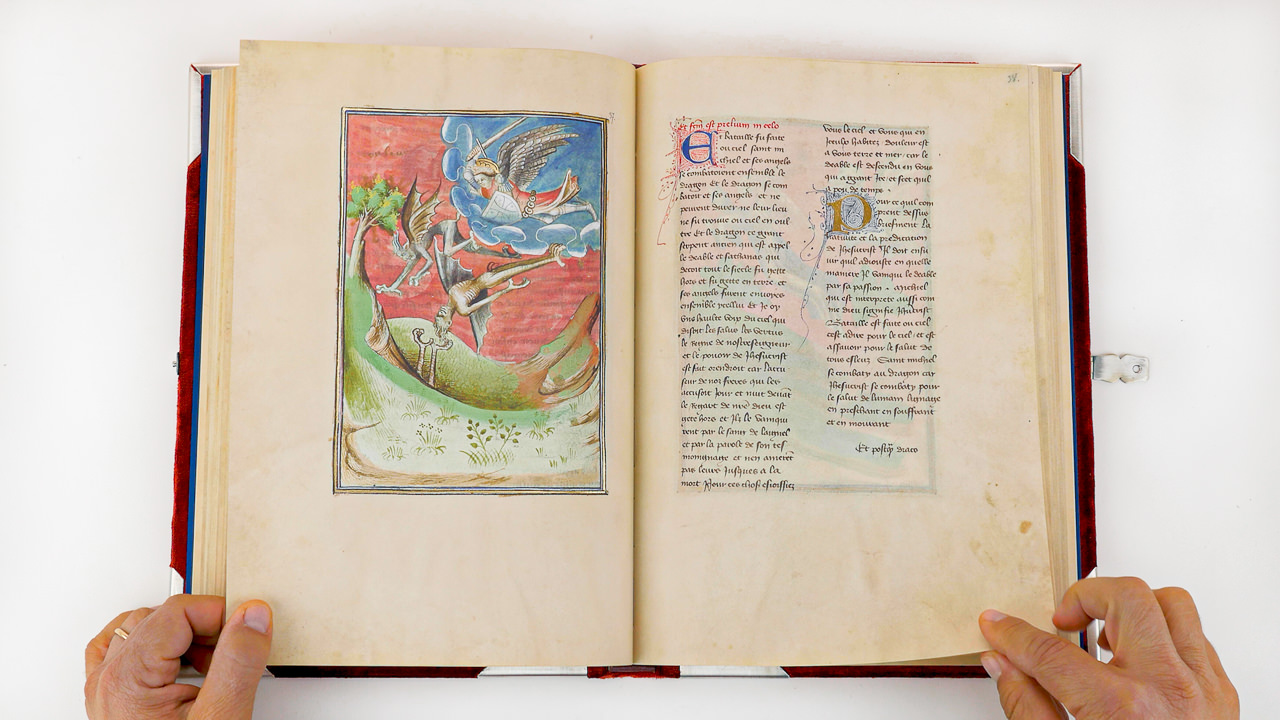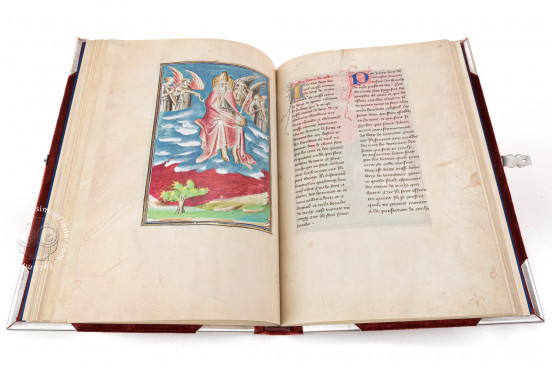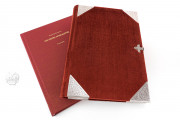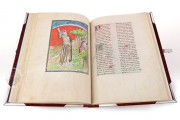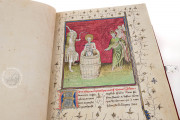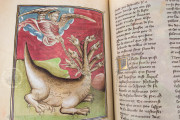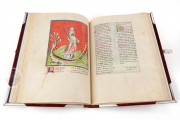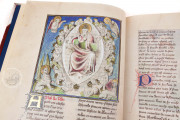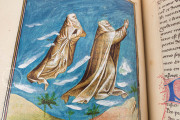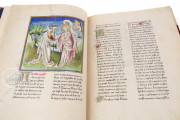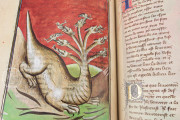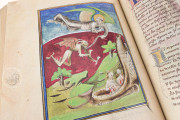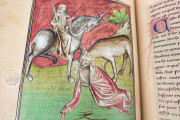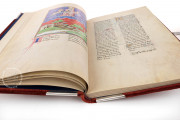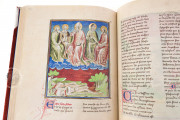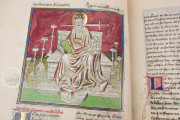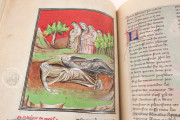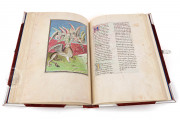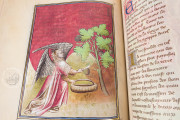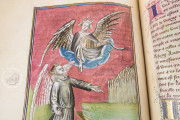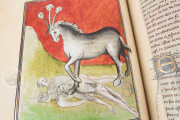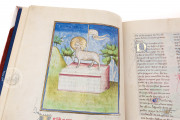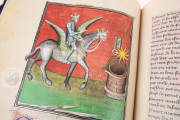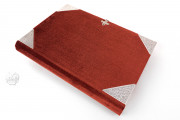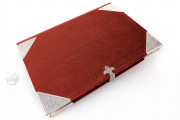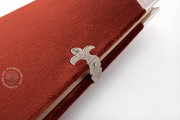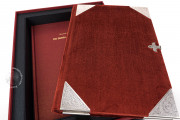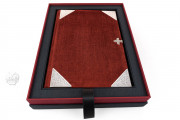Made in Paris in the first years of the fifteenth century, the Berry Apocalypse is a remarkable late Gothic manuscript likely made for Jean, Duc de Berry, brother of King Charles V of France. The rich illuminations are idiosyncratic in their content, drawing from a variety of source materials to visualize the events from the Book of Revelation. The innovative iconography ties the corruption of the contemporary Church to the rise of the Antichrist.
The text is dominated by the large miniatures filling (or nearly so) each verso page. The text begins below the image, often relegated entirely to the facing recto page. The illustrations do not necessarily correlate to the accompanying verses, creating a second narrative that is strictly visual in nature and invites the reader to contemplate the complex relationship between text and image and the end of days.
The style of the illumination has ties to similar works from early fifteenth-century Paris such as the Angers Apocalypse tapestry. The workshop produced several manuscripts associated with nobility suggesting it enjoyed ongoing elite patronage making the Berry Apocalypse an important exemplar of book production at a time of religious and social change in western Europe.
A Visionary Apocalypse
The Berry Apocalypse's visual program of 85 large miniatures is unusual in both its scope and iconographic content. Each image is contained in a simple frame after the first, which has additional marginal vegetal flourishes.
The compositions feature large, central figures on flat backgrounds of intense red, blue, and green. Windswept landscapes and painterly foliage convey energy and unrest. Gold is used sparingly for halos and occasional details.
The Primacy of Image over Text
The manuscript is composed of excerpts from the Book of Revelation accompanied by the relevant commentary from Expositio super septum visions in Apocalypsis of Berengaudus. The French text is presented in two columns of Bastarda with rubric captions in Latin. Large capitals with pen flourishes demarcate the beginning of verses and the commentary.
Additional text appears as labels within the illustrative compositions. The miniatures dominate the text, becoming larger through the course of the book, suggesting the reader's gaze to be drawn to them and not the words alone.
From the Library of Jean, Duc de Berry
The Berry Apocalypse is so named due to a partly erased inscription, Ce libre est au Duc de Berry Jehan. While the duke's direct patronage is unknown, the miniature on fol. 71v depicts John the Evangelist with his eagle signifier and John the Baptist.
The unusual double portrait of Jean's namesake saints may indicate his direct commission. The manuscript passed to the Malvoisin family and through a series of counts before being sold at auction in 1879. Purchased by J.P. Morgan in 1900.
Binding description
The original book cover of dark orange velvet features chased silver hinges and a fleur-de-lise shaped clasp.
We have 1 facsimile edition of the manuscript "Berry Apocalypse": Die Berry-Apokalypse facsimile edition, published by Mueller & Schindler, 2020
Request Info / Price
